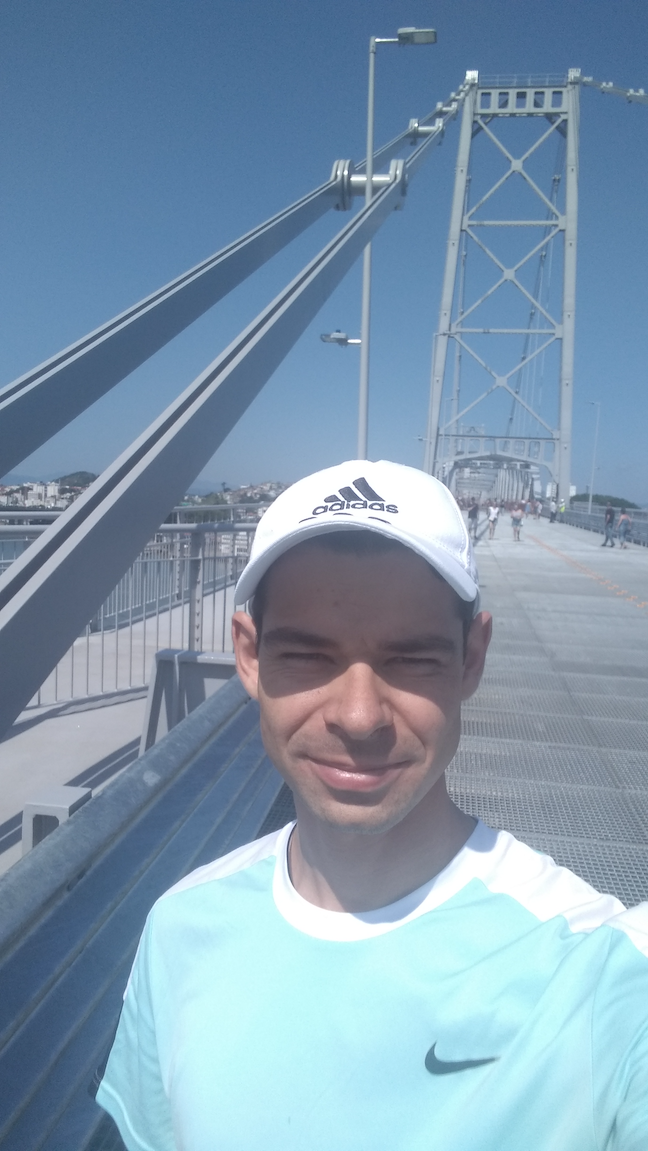About me
Currently
I am a Post-Doctoral Associate at Cornell University, US. I assist the Next Generation Cassava Project in three working groups of the Research division team (Optimizers, Quality Control, Genomic Prediction). In these groups, the members share knowledge, experiences, and results on new strategies/tools applied to cassava breeding aiming to enhance genetic gain, quality control procedures and reduce the annual costs of cassava breeding programs.
I got work experience with autogamous, alogamous and vegetative propagation crops, including maize, cassava, common beans, oat, rye, and triticale. This experience trains my mind and test breeding strategies and technology adoption/adaption with the goal of increasing the rate of genetic gain, as genomic prediction, UAV phenotyping, and NIRS prediction.
Career Journey
I am agronomist graduated from the College of Agronomy and Veterinary of Santa Catarina State University (UDESC). I got my Master and Ph.D. Degree in Genetics and Breeding at the Federal University of Viçosa (UFV).
Under Graduation - Agronomy - Santa Catarina State University
I discovered my passion for plant breeding early at my under graduation during my genetics classes, which give me the opportunity to work as a volunteer in IMEGEM Institute (Institute of Breeding and Molecular Genetics) of UDESC.
At IMEGEM, I was responsible to perform visual mass selection in segregating populations of common beans (Phaseolus vulgaris Link), carrying out activities of the bank of germplasm, and for farm and experimental design activities. During my last three months of my under graduation, I assisted the Researcher Alfredo do Nascimento Júnior of EMBRAPA Wheat at Triticale, oat, and rye breeding program. In EMBRAPA I performed controlled crosses in triticale, and performed visual mass selection on S2:4 populations.
Master’s degree - Genetics and Breeding - Federal University of Viçosa
I moved to Viçosa - MG, to pursuit my dream of becoming a classical plant breeder, and also to start my Master in plant breeding with the advice of Professor Borem. Federal University of Viçosa gave me several opportunities of study, international contacts, and friendships, which I embraced as much as I could. In one of this opportunities I moved to Piracicaba to work with Professor Roberto Fritsche-Neto at the Allogamous Plant Breeding Laboratory of the Luiz de Queiroz College of Agriculture of the University of São Paulo. In USP/ESALQ, I evaluated the genetic vulnerability and the relationship of the Brazilian commercial germplasm of Maize, link to the paper.

Doctor’s degree - Genetics and Breeding - Federal University of Viçosa
My PhD started with a call from Professor Fabyano Fonseca e Silva of Federal University of Viçosa. Professor Fabyano recommended me for an EMBRAPA Cassava Ph.D fellowship to work on genomic selection in Cassava. That was my first contact with my future advisors the Professor Marcos Deon and the Cassava Breeder Eder Jorge de Oliveira.
During my PhD, I gained proficiency in genomic prediction, quantitative and population genetics, linear models, mixed models, biometric statistics, high throughput phenotyping, images analysis, and NIRS prediction. I am extremely proficient in the R statistical language. I assisted the Cassava Breeder Eder Jorge de Oliveira to carry on a segregating population with genomic selection for three breeding cycles. I was responsible for conducting field trails and individual selection, and tissue collection for genotyping. This work resulted in eight publications.
Technology and Innovation Fellow - EMBRAPA Cassava
After my PhD I was hired at EMBRAPA to keep my work on genomic prediction and other breeding activities. I represented EMBRAPA at three work groups of the Next Generation Cassava Project (Optimizers, Quality Control, and Genomic Prediction).

Greatest work achievements
- Genomic selection applied in EMBRAPA Cassava breeding program;
- Breeding program management experience for Clonal propagation crops;
- Mixed models selection in cassava breeding program;
- Wide experience with high throughput phenotyping with UAV and portable NIRS phenotyping.
